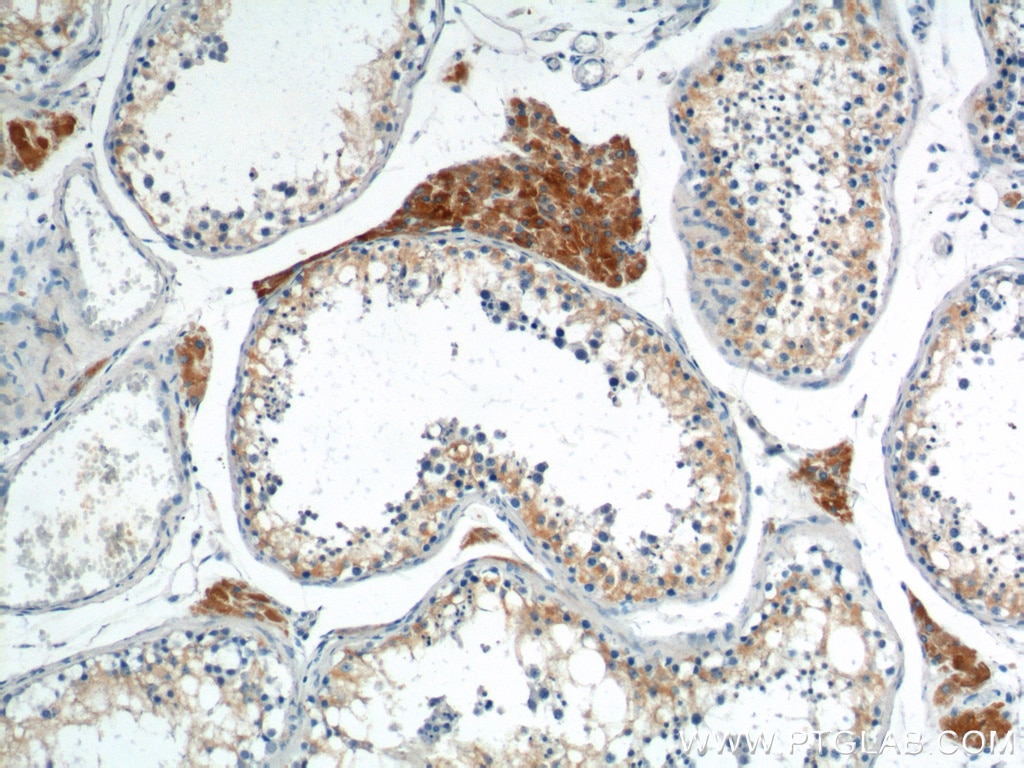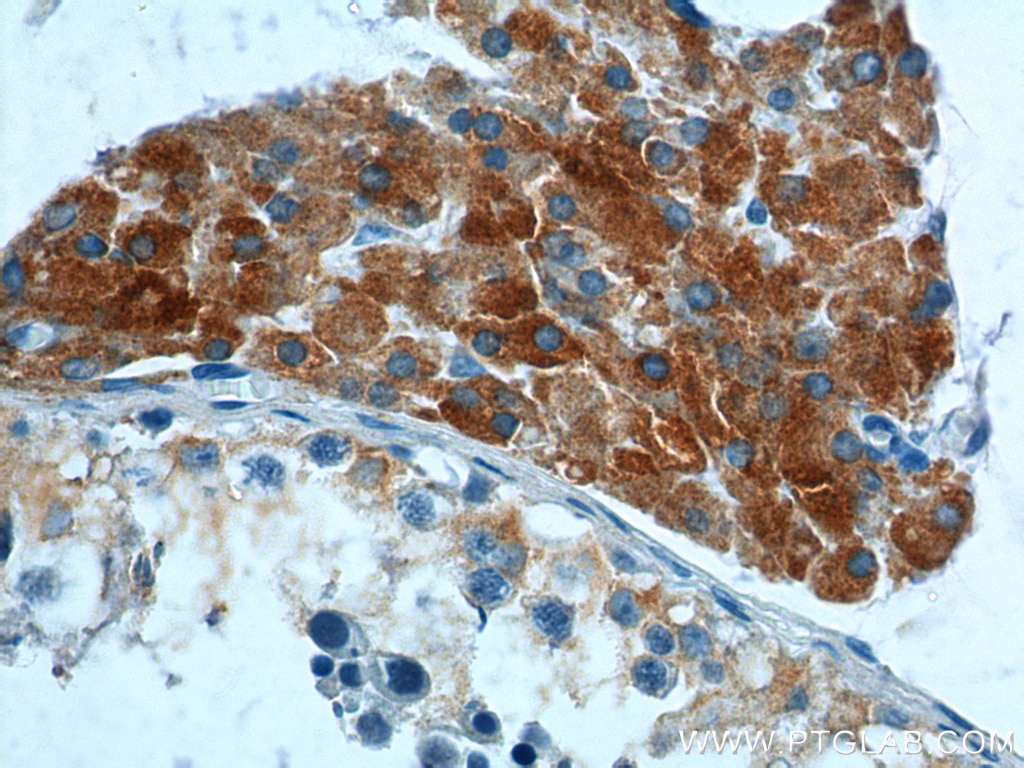Anticorps Polyclonal de lapin anti-HSD17B3
HSD17B3 Polyclonal Antibody for IHC, ELISA
Hôte / Isotype
Lapin / IgG
Réactivité testée
Humain, rat, souris
Applications
IHC, IF, ELISA
Conjugaison
Non conjugué
N° de cat : 13415-1-AP
Synonymes
Galerie de données de validation
Applications testées
| Résultats positifs en IHC | tissu testiculaire humain il est suggéré de démasquer l'antigène avec un tampon de TE buffer pH 9.0; (*) À défaut, 'le démasquage de l'antigène peut être 'effectué avec un tampon citrate pH 6,0. |
Dilution recommandée
| Application | Dilution |
|---|---|
| Immunohistochimie (IHC) | IHC : 1:100-1:400 |
| It is recommended that this reagent should be titrated in each testing system to obtain optimal results. | |
| Sample-dependent, check data in validation data gallery | |
Applications publiées
| IHC | See 7 publications below |
| IF | See 4 publications below |
Informations sur le produit
13415-1-AP cible HSD17B3 dans les applications de IHC, IF, ELISA et montre une réactivité avec des échantillons Humain, rat, souris
| Réactivité | Humain, rat, souris |
| Réactivité citée | rat, Humain, souris |
| Hôte / Isotype | Lapin / IgG |
| Clonalité | Polyclonal |
| Type | Anticorps |
| Immunogène | HSD17B3 Protéine recombinante Ag4081 |
| Nom complet | hydroxysteroid (17-beta) dehydrogenase 3 |
| Masse moléculaire calculée | 310 aa, 35 kDa |
| Numéro d’acquisition GenBank | BC034281 |
| Symbole du gène | HSD17B3 |
| Identification du gène (NCBI) | 3293 |
| Conjugaison | Non conjugué |
| Forme | Liquide |
| Méthode de purification | Purification par affinité contre l'antigène |
| Tampon de stockage | PBS with 0.02% sodium azide and 50% glycerol |
| Conditions de stockage | Stocker à -20°C. Stable pendant un an après l'expédition. L'aliquotage n'est pas nécessaire pour le stockage à -20oC Les 20ul contiennent 0,1% de BSA. |
Protocole
| Product Specific Protocols | |
|---|---|
| IHC protocol for HSD17B3 antibody 13415-1-AP | Download protocol |
| Standard Protocols | |
|---|---|
| Click here to view our Standard Protocols |
Publications
| Species | Application | Title |
|---|---|---|
Eur J Endocrinol Transcriptional comparison of testicular adrenal rest tumors with fetal and adult tissues | ||
J Steroid Biochem Mol Biol Features of the fetal gonad in androgen synthesis in the postpubertal testis are preserved in complete androgen insensitivity syndrome due to a novel genetic splice site donor variant in androgen receptor gene intron 1. | ||
Syst Biol Reprod Med Recellularized rat testis scaffolds with embryoid bodies cells: a promising approach for tissue engineering | ||
J Endocr Soc Precocious Puberty in a Boy With Bilateral Leydig Cell Tumors due to a Somatic Gain-of-Function LHCGR Variant | ||
Biol Res Mouse testicular macrophages can independently produce testosterone and are regulated by Cebpb |



